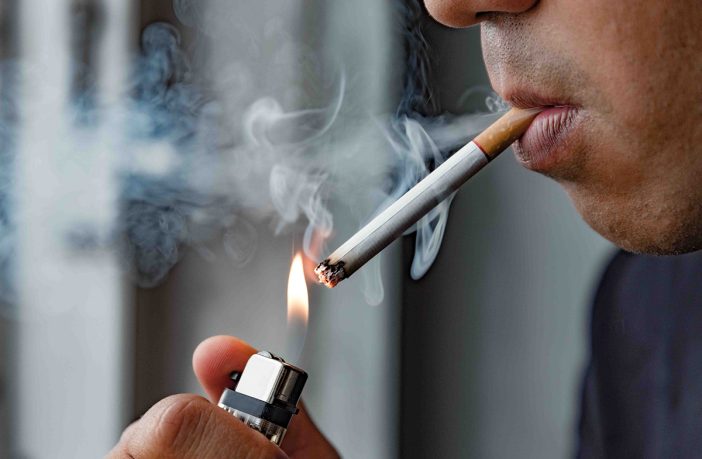With the economic costs of smoking totaling more than $600 billion per year, the personal-finance website WalletHub today released its report on The Real Cost of Smoking by State, to help encourage the estimated 28.3 million tobacco users in the U.S. to kick this dangerous habit.
WalletHub calculated the potential monetary losses — including the lifetime and annual costs of a pack of cigarettes per day, health care expenditures, income losses and other costs — brought on by smoking and exposure to secondhand smoke.
The Financial Cost of Smoking in New York (1=Lowest, 25=Avg.):
- Overall rank for New York: 1st
- Out-of-Pocket Cost per Smoker – $225,833 (Rank: 1st)
- Financial-Opportunity Cost per Smoker – $4,022,638 (Rank: 1st)
- Health-Care Cost per Smoker – $275,187 (Rank: 7th)
- Income Loss per Smoker – $649,356 (Rank: 15th)
- Total Cost Over Lifetime per Smoker: $5,188,634
- Total Cost per Year per Smoker: $108,097
Cost of Smoking by State
Quitting smoking is a common New Year’s resolution, and it’s a good one to make for more than just health reasons. You could also be saving yourself millions of dollars. New York residents have the most to gain by quitting, according to a new report by the personal-finance website WalletHub, which found that the average smoker in New York loses out on around $5.2 million over the course of their lifetime. “Only about $226,000 of that is the out of pocket cost paid for tobacco products,” said Cassandra Happe, an analyst at WalletHub. “The bulk comes from the financial opportunity cost of buying tobacco instead of investing the money, which reduces the average New Yorker’s retirement budget by around $4 million.”
After New York, the next most expensive places to be a smoker are the District of Columbia, Maryland, Connecticut and Rhode Island, according to WalletHub’s report, which calculated the potential monetary losses of a cigarette pack per day, health care expenditures, income losses and other costs brought on by smoking and exposure to secondhand smoke.
“Some people may not be as swayed by investment loss predictions, as they are theoretical to some degree. But the yearly costs of income loss and medical expenses are very real,” said Happe. “For example, being a smoker in the second-costliest place, the District of Columbia, will reduce your income by an average of nearly $17,000 per year, and you’ll have an average of close to $6,500 in smoking-related medical costs per year.”
Smoking also doesn’t just hurt the smoker – it’s costly for the rest of the population too, due to secondhand smoke. For instance, in Maryland, the third most expensive state, smokers will cause an average of nearly $10,000 in losses to others due to secondhand smoke exposure over a lifetime.
Top 10 Least and Most Expensive States
| States with the Highest Smoking Costs | States with the Lowest Smoking Costs | ||
| 1. New York | 42. Kentucky | ||
| 2. District of Columbia | 43. Idaho | ||
| 3. Maryland | 44. South Carolina | ||
| 4. Connecticut | 45. Georgia | ||
| 5. Rhode Island | 46. Louisiana | ||
| 6. Massachusetts | 47. North Dakota | ||
| 7. Minnesota | 48. North Carolina | ||
| 8. Hawaii | 49. Alabama | ||
| 9. Alaska | 50. Missouri | ||
| 10. Washington | 51. Mississippi | ||
“Smoking isn’t just bad for your health. It can also burn a gigantic hole in your wallet, potentially losing you millions of dollars over a lifetime in the most expensive states,” said Happe. “While tobacco products are expensive, the bulk of the money lost by smokers comes from income and investment losses. Increased healthcare costs and home insurance premiums are among the other big financial downsides of smoking.”
Resolving to quit smoking is easy. Actually quitting is difficult – but there are several steps you can take to make the process more manageable.
Tips for Quitting Smoking
- Use nicotine replacement therapy (NRT): Consider using nicotine replacement products such as patches, gum, lozenges, or nasal spray. These can help manage withdrawal symptoms and gradually reduce nicotine dependence.
- Replace smoking with healthy habits: Substitute smoking with healthier activities. Exercise, chew gum, snack on fruits or vegetables, or engage in hobbies to distract yourself from cravings.
- Understand your triggers: Identify situations, emotions, or activities that trigger your urge to smoke. Once you’re aware of these triggers, develop strategies to cope with them without turning to cigarettes.
- Seek support: Share your decision to quit with friends, family, or coworkers who can provide encouragement and accountability. Consider joining a support group or seeking professional help.
- Reward yourself: Celebrate your milestones, whether they are hours, days, or weeks without smoking. Treat yourself to something special as a reward for your hard work and dedication.
- Create a Smoke-Free Environment: Remove cigarettes, lighters, and ashtrays from your home and car. Make your living spaces smoke-free to reduce the temptation to smoke.














